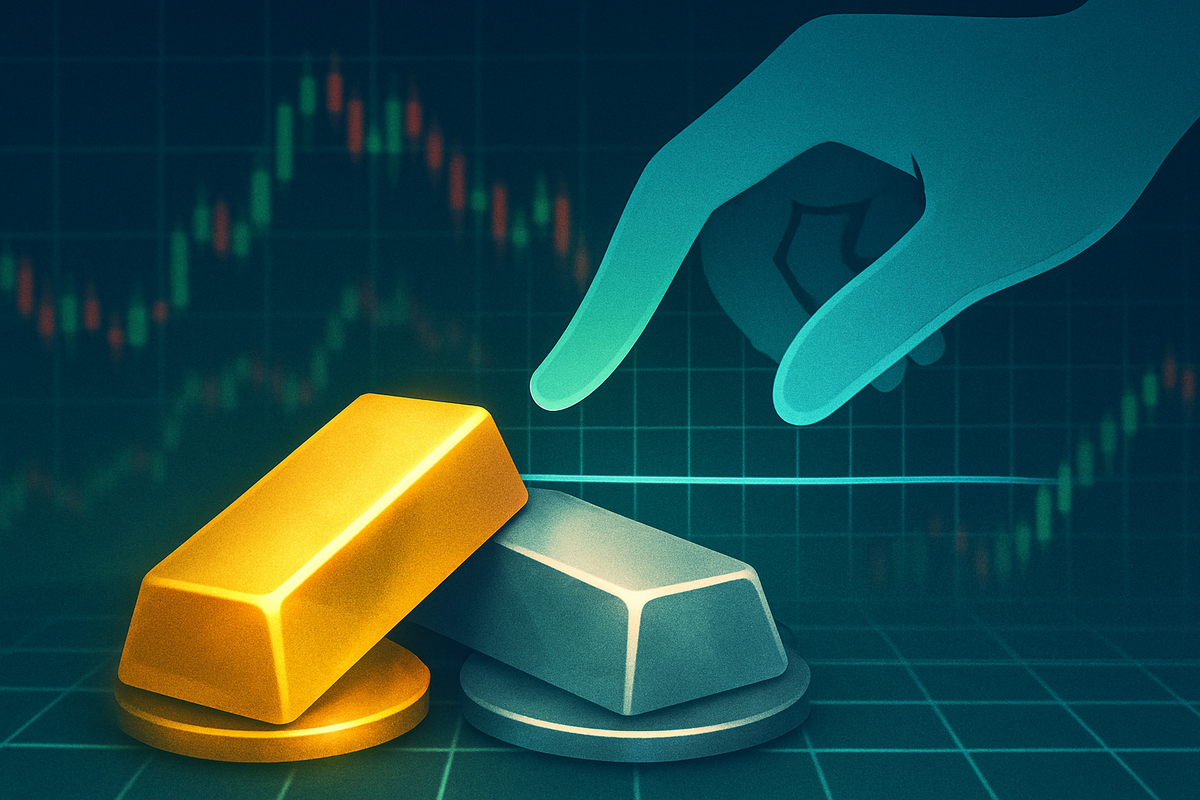
Mumbai, India – October 22, 2025 – The National Stock Exchange (NSE) has moved decisively to curb rampant speculation and manage risk in the precious metals segment, announcing and implementing significant increases in margin requirements for gold and silver futures contracts. This critical regulatory intervention comes amidst an unprecedented rally and extreme price volatility witnessed in both metals throughout 2025, prompting concerns over market stability and trader exposure.
Effective in two phases, with initial margin revisions taking effect on October 14, 2025, and additional margins being levied from October 23, 2025, this decision by the NSE is a clear signal of its commitment to market integrity. While aimed at cooling down speculative fervor and ensuring adequate collateral against potential losses, the move is expected to immediately impact trading costs and potentially reduce participation, especially among retail and highly leveraged traders in the short term.
A Regulatory Response to Unprecedented Market Dynamics
The NSE's decision to hike margins is a direct response to the "wild price swings" and "unprecedented rally" that have characterized gold and silver markets in 2025. Leading up to this intervention, gold prices on the Multi Commodity Exchange (MCX) (MCX: MCX) had soared to an all-time high of ₹1,26,350 per 10 grams, while silver breached ₹1,60,800 per kilogram around mid-October. Globally, silver also reached a historic peak of US$52.50 per ounce. This meteoric rise and subsequent volatility were fueled by a confluence of factors, including escalating geopolitical tensions in the Middle East, persistent US-China trade frictions driving safe-haven demand, a weakening Indian rupee, and domestic inflation hovering near 6%. Speculation around future Federal Reserve rate cuts also contributed to the upward momentum.
To address these risks, the NSE, through its clearing arm, first revised the Minimum Initial Margin (IM) and Short Option Minimum Margin (SOMM) for all gold contracts to 7% and silver contracts to 11.50%, effective October 14, 2025. Following this, an "additional margin" was imposed, taking effect on October 23, 2025: a 2.5% additional margin on all silver future contracts and a 1% additional margin on all gold future contracts. These are layered on top of the already increased base margins. The primary objective is clear: to make it more expensive to hold large speculative positions, thereby reducing excessive leverage and ensuring that traders have sufficient capital to cover potential losses. This "risk containment measure" aims to restore equilibrium and prevent potential systemic issues arising from unbridled volatility and widening price gaps between exchange-traded contracts and local physical market rates, particularly noted in silver.
Winners and Losers: The Market Adjusts to Higher Costs
The imposition of higher margins will undoubtedly create distinct winners and losers within the precious metals trading ecosystem.
Individual traders and highly leveraged participants are likely to feel the most significant pinch. The increased capital requirement per lot will reduce their ability to take large positions, potentially leading to a decrease in trading volumes and liquidity. For many, especially retail traders who rely on leverage, the cost of participation has effectively risen, forcing them to either reduce their exposure or exit the market altogether. This could lead to a consolidation of trading activity among better-capitalized entities.
Commodity brokerage firms might experience a short-term dip in trading volumes and, consequently, commission revenues. However, the long-term benefit for them could be a more stable client base less prone to margin calls and defaults, reducing their own operational risks.
Conversely, large institutional investors and well-capitalized traders are likely to be less impacted by the increased margin requirements. Their deeper pockets mean they can absorb the higher costs more readily, potentially allowing them to gain a larger share of the market as smaller players retreat. This could lead to a shift in market structure, favoring institutional participation over retail.
For mining companies like Hindustan Zinc (NSE: HINDZINC) or gold refiners, the impact is less direct. While increased stability in futures prices could offer more predictable hedging opportunities, a significant reduction in speculative activity might temper extreme price spikes, potentially leading to more rational price discovery based on supply and demand fundamentals rather than pure speculation. Similarly, jewelers and manufacturers who hedge their inventory might find the market less volatile for their hedging strategies, though the overall price level remains a key factor.
Broader Implications: A Stricter Regulatory Landscape
The NSE's move is more than just a tactical adjustment; it signifies a broader trend towards stricter market regulation and proactive risk management in India's financial markets. This action aligns with the overarching goal of regulatory bodies, including the Securities and Exchange Board of India (SEBI), to protect investors and maintain market stability, especially in segments prone to speculative excesses.
Historically, such margin hikes have been deployed in various commodity and equity segments during periods of intense volatility. For instance, similar measures have been taken by exchanges globally to curb excessive speculation in crude oil or agricultural commodities. These precedents suggest that regulators are willing to intervene when market dynamics threaten to destabilize the system or expose a large number of participants to undue risk. The decision also has potential ripple effects: it might encourage other exchanges, like the MCX, to further review and adjust their own margin frameworks to ensure consistent risk management across the commodity derivatives ecosystem. It also sends a clear message to market participants that regulatory oversight will intensify during periods of unusual market behavior, fostering a more disciplined trading environment. This fits into a broader industry trend of enhancing market surveillance and implementing dynamic risk management tools to adapt to fast-evolving global and domestic economic conditions.
The Road Ahead: Stability vs. Liquidity
Looking ahead, the short-term impact of these elevated margins will likely be a reduction in speculative trading activity and potentially lower trading volumes in gold and silver futures. This could lead to a period of consolidation in prices, as the market adjusts to the higher cost of leverage and focuses more on fundamental drivers.
In the long term, the NSE's decision aims to foster a more mature and stable precious metals derivatives market. It might encourage a shift from purely speculative trading towards more genuine hedging and investment-driven participation. Traders will need to adapt their strategies, focusing on higher capital efficiency and potentially longer-term positions rather than short-term, highly leveraged plays. This could present opportunities for sophisticated traders who can navigate the new margin environment, while posing challenges for those accustomed to high leverage. Potential scenarios include a short-term dip in prices due to reduced speculative buying, followed by more stable, fundamentally driven price movements. The market might also see an increased focus on physical gold and silver as a direct investment, as the cost of derivatives trading rises.
Navigating the New Normal in Precious Metals
The National Stock Exchange's decision to levy additional margins on gold and silver contracts marks a pivotal moment for India's commodity derivatives market. It underscores the regulator's proactive stance in mitigating risks associated with extreme price volatility and speculative excesses. While the immediate aftermath may see reduced trading volumes and increased costs for participants, particularly those reliant on high leverage, the long-term objective is to cultivate a more robust, stable, and fundamentally driven market for precious metals.
Investors should closely monitor the impact of these margin changes on market liquidity and price discovery. A shift towards more stable price movements, driven by genuine supply and demand rather than speculative fervor, could ultimately benefit long-term investors and hedgers. As the market adapts to this new regulatory landscape, participants will need to re-evaluate their risk management strategies and capital allocation. The coming months will be crucial in observing how these measures reshape trading behavior and contribute to the overall health and stability of the gold and silver markets in India.
This content is intended for informational purposes only and is not financial advice







